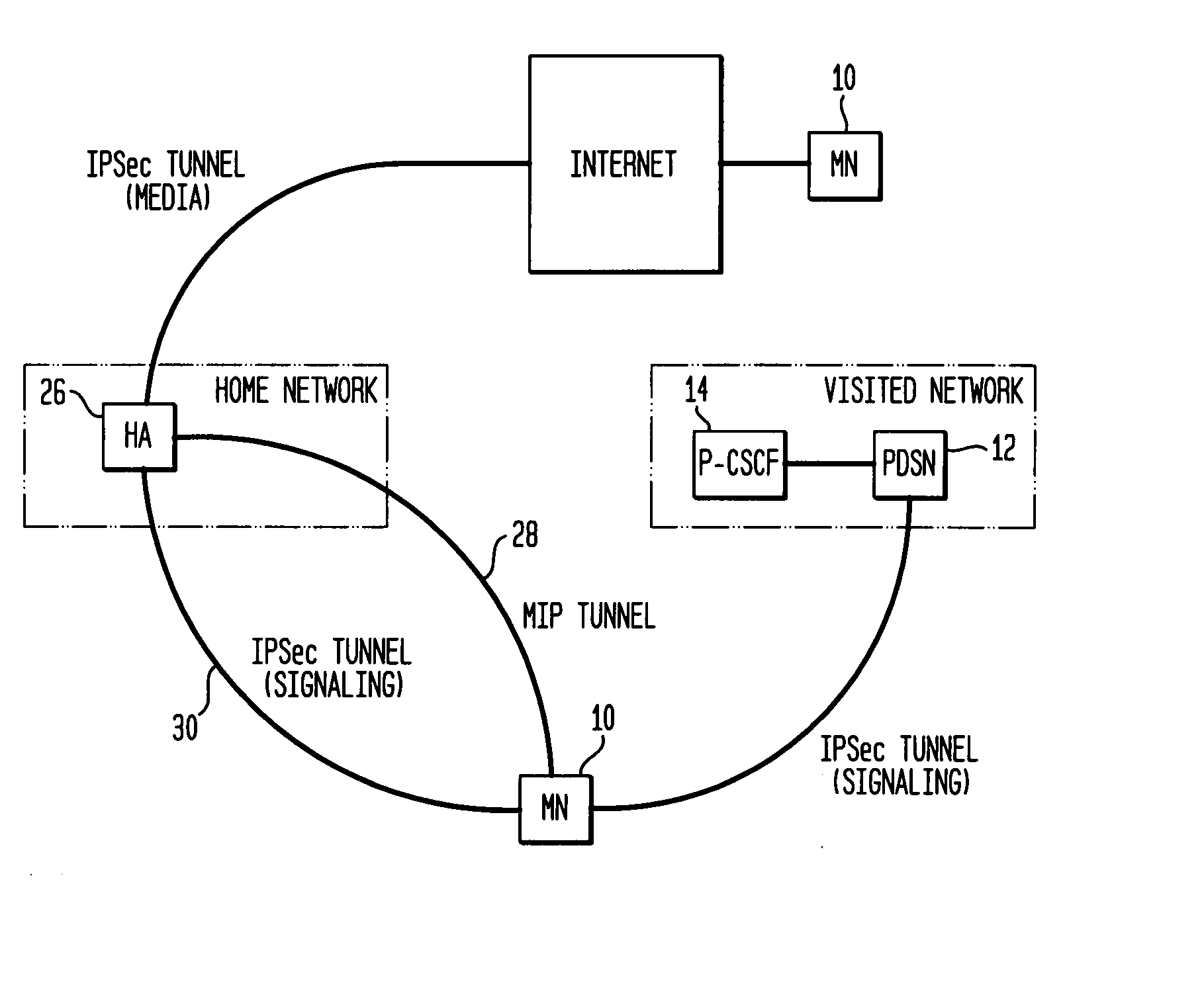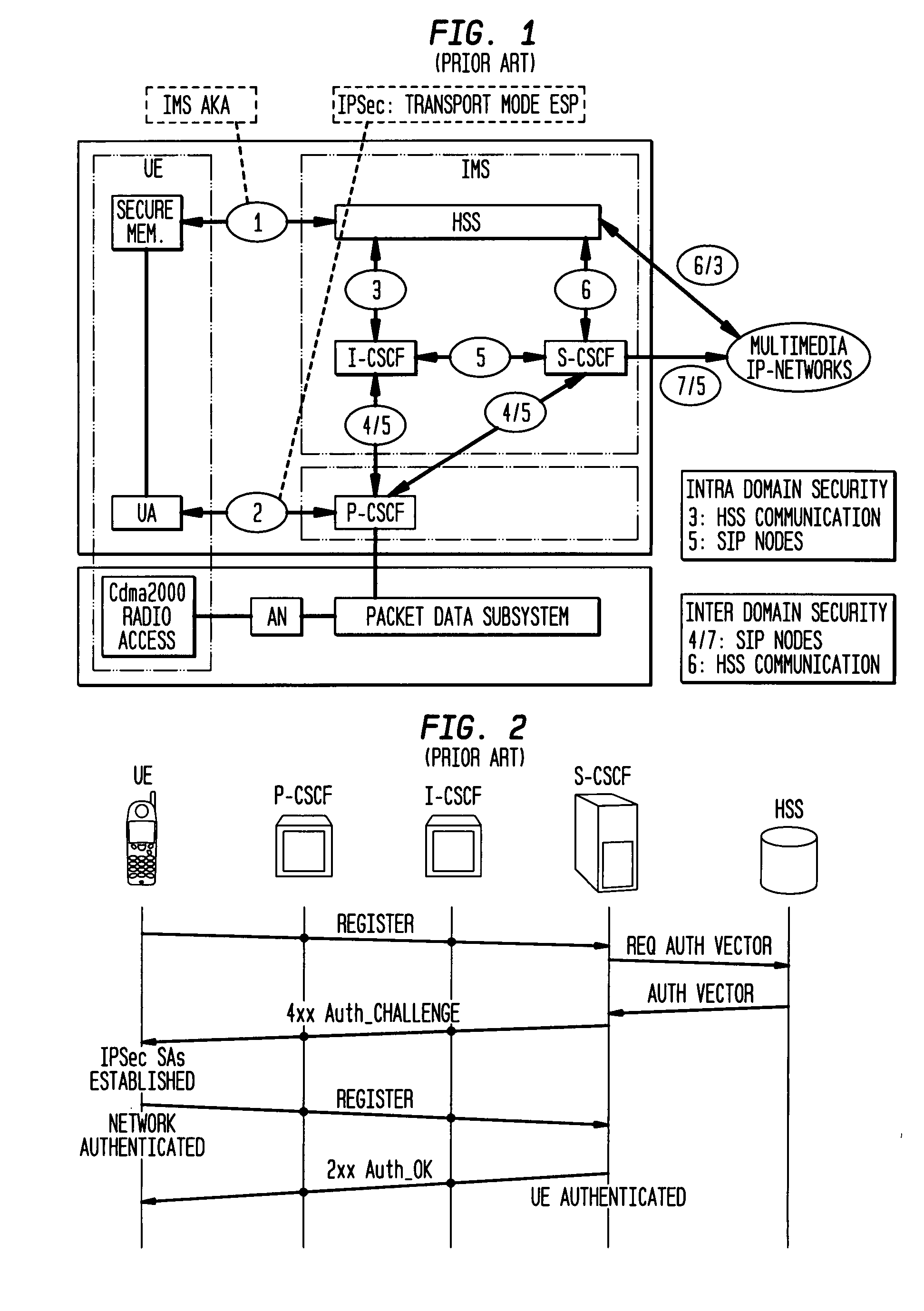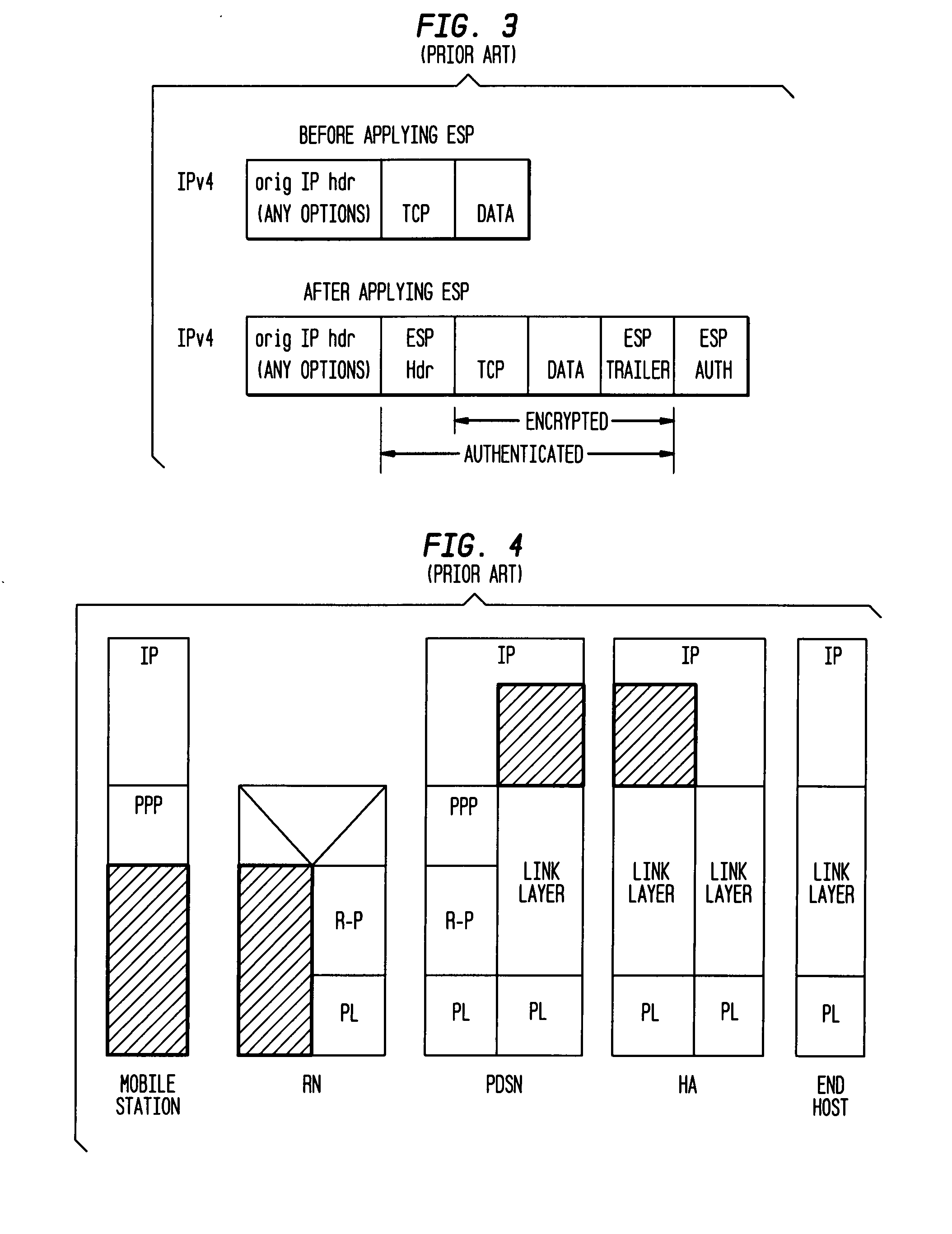Security optimization for IMS/MMD architecture
a security optimization and ims/mmd technology, applied in the field of ims/mmd architecture, can solve the problems of end-to-end security, end-to-end security may interfere, and do not provide end-to-end security, so as to reduce the overhead of the ipsec tunnel for signaling and reduce the time needed
- Summary
- Abstract
- Description
- Claims
- Application Information
AI Technical Summary
Benefits of technology
Problems solved by technology
Method used
Image
Examples
Embodiment Construction
[0119] Security optimization can be achieved by performing some of the steps necessary for establishing a secure connection for a mobile in a new network before the mobile physically moves to the new network. As discussed above, an SA is established between a mobile and the network before any service is provided to the mobile. This SA typically occurs between the mobile and a signaling entity. Hence, a mobile has an “old” or existing security association through an “old” signaling entity. When the mobile moves to a new or different network, a “new” security association is established through a “new” signaling entity. Executing the steps to create the new security association before the move lessens the delay during SA re-association. However, to be able to perform steps prior to the move, it must be determined to which network the mobile will move. In the alternative, delay can be shortened by reducing the number of IP-IP tunnels in the new network.
[0120] In order to obtain securit...
PUM
 Login to View More
Login to View More Abstract
Description
Claims
Application Information
 Login to View More
Login to View More - R&D
- Intellectual Property
- Life Sciences
- Materials
- Tech Scout
- Unparalleled Data Quality
- Higher Quality Content
- 60% Fewer Hallucinations
Browse by: Latest US Patents, China's latest patents, Technical Efficacy Thesaurus, Application Domain, Technology Topic, Popular Technical Reports.
© 2025 PatSnap. All rights reserved.Legal|Privacy policy|Modern Slavery Act Transparency Statement|Sitemap|About US| Contact US: help@patsnap.com



